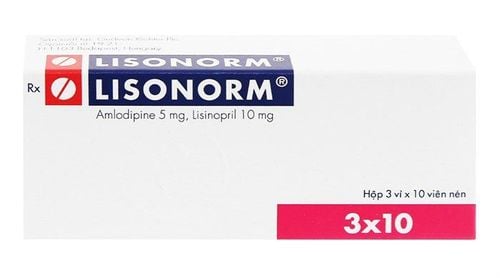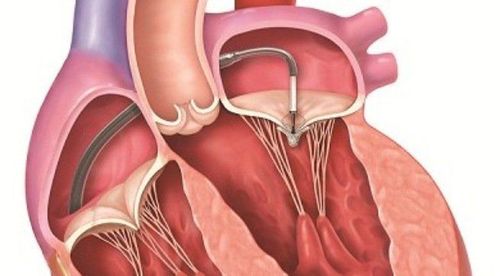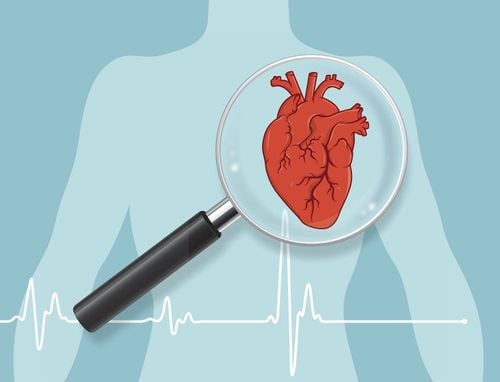This is an automatically translated article.
The article is professionally consulted by Master, Doctor Do Xuan Chien and Master, Doctor Hoang Thi Hoa - Department of Medical Examination and Internal Medicine - Vinmec Ha Long International General Hospital.Heart valve stenosis usually occurs when the structure of the valve leaflets is deformed, instead of being slender and soft, they become hard, thickened or stick together, preventing the leaflets from opening completely. All heart valves can be narrowed, but the most common are the mitral and tricuspid valves. Through this article, let's learn how to treat mitral stenosis.
1. Overview of mitral stenosis
Mitral stenosis is the most common heart valve disease, accounting for nearly 60% of heart valve diseases. The basic symptoms of mitral stenosis include:Difficulty breathing, especially when lying down and often worse at night. 50-80% of patients develop paroxysmal or chronic episodes of atrial fibrillation. Thereby causing acute pulmonary edema and accelerating heart failure, even leading to death if not treated promptly. These symptoms appear when the patient is pregnant or has atrial fibrillation. Therefore, in patients with mitral stenosis that has not been completely treated, doctors often advise patients to avoid pregnancy.
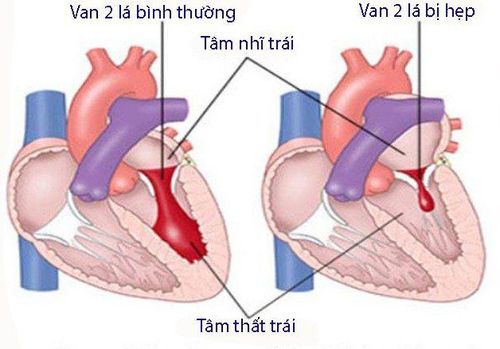
2. Treatment measures
Mitral stenosis is a lifelong progressive disease, often with a period of initial stability and then severe progression later. Therefore, patients need to be aware of balance in diet and rest, such as limiting salt consumption, sleeping with the head elevated, taking anti-heart failure drugs, diuretics.If the patient has severe mitral stenosis, it may be necessary to perform a laminectomy, valvuloplasty, or total valve replacement. Not all stenosis cases require valve replacement surgery. But when the disease is advanced or responds poorly to treatment drugs, doctors still need to prescribe it to avoid risks and prolong the patient's life, even though the cost of surgery / surgery to replace a narrow heart valve is quite large. .
Thus, depending on the stage and each specific patient, the patient will have 3 basic options for the treatment of mitral stenosis:
Percutaneous balloon mitral valve dilation. Mitral valve repair surgery. Mitral valve replacement surgery. The choice of intervention method depends on the mild to severe damage of the mitral valve.
2.1. Mitral valve dilation with Inoue balloon In mitral stenosis, the leaflets no longer open and close as flexibly as normal when the heart contracts, but stick together, limiting the ability to close or open maximally. Percutaneous balloon dilatation attempts to separate the leaflets from each other to relieve obstruction.
Percutaneous balloon dilation is a technique of inserting a balloon-tipped catheter from the inferior vena cava into the right atrium, through the atrial septum to the left atrium, and then down to the left ventricle. When at the level of the mitral valve, the balloon will be inflated up and down gradually in increasing sizes to expand the waist of the balloon causing separation of the two valve edges until the desired result is achieved.
Percutaneous mitral stenosis will be recommended by surgeons to treat mitral stenosis, unless the patient has the following problems:
Left atrial thrombosis (blood clot). Severe calcification of the mitral valve. Moderate to severe mitral regurgitation associated with mitral stenosis. In addition, percutaneous mitral stenosis is not an option when congenital mitral valve disease is present.
Percutaneous mitral stenosis is preferred because:
High success rate, few complications through many studies. Significant improvement in hemodynamic status and orifice area. There are immediate results, and at long-term follow-up even more so compared to valve dissection in both closed and open hearts. Percutaneous mitral valve angioplasty is a less invasive procedure, with many advantages compared to surgery such as: short hospital stay, less pain, no scar on the chest, more comfortable psychology... Mitral stenosis dilation Percutaneous is performed in some special situations where the surgery is difficult to succeed completely or the risk is high such as: in pregnant women, in people with severe heart failure, in patients in an emergency condition... Percutaneous mitral stenosis is the leading method for treating mitral stenosis worldwide and it is the 2nd procedure in terms of number and significance in cardiovascular interventions. In Vietnam, mitral stenosis started to be performed in 1997, so far it has become a routine treatment method.
2.2. Mitral valve repair The goal of mitral valve repair is the same as percutaneous mitral stenosis – the goal is to separate the fused leaflets. However, what is different about mitral valve repair is that it is an open-heart surgery that uses a surgical knife to cut open the fused valve margin.
Mitral valve repair surgery usually leads to good results. However, you will be exposed to the risks of a major surgery and a longer recovery time, which is why doctors do not recommend this method in the first place.
Mitral valve repair is often a good choice for patients with contraindications to percutaneous mitral stenosis (eg, left atrial thrombus, calcification, or mitral regurgitation).
Similar to percutaneous mitral stenosis, the mitral valve after valve repair will gradually narrow again, so patients undergoing this procedure take measures to evaluate the heart normally. through .
2.3. Mitral valve replacement surgery Mitral valve replacement is a last resort because it carries a higher risk of complications than balloon dilation or mitral valve repair.
In mitral valve replacement, the valve is replaced with an artificial valve. The prosthetic valve can be composed entirely of artificial material (mechanical valve) or can be made from animal heart valves, usually from pigs (biological valves).
All artificial heart valves have a tendency to form blood clots. However, blood clots are less likely to form on biological valves compared to mechanical valves. Therefore, people with biological heart valves usually do not need to take long-term anticoagulation therapy. People with mechanical valves will take continuous anticoagulation.
Mechanical valves generally last longer than biological valves. If you need mitral valve replacement, are under age 65, and you can use anticoagulation, your doctor will likely recommend this option for you. If you are over 65 years old, or you are young but cannot use anticoagulation, a bioprosthetic valve is usually recommended.
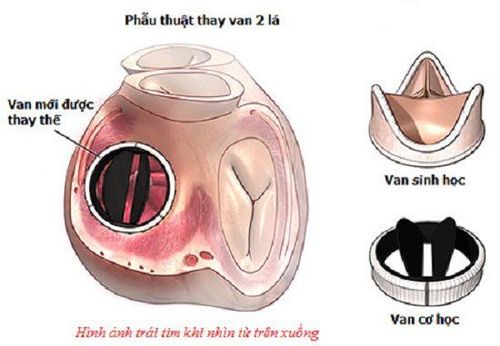
After balloon angioplasty or mitral stenosis, echocardiography should be done to evaluate basic hemodynamic parameters and rule out serious complications such as mitral regurgitation, left ventricular dysfunction. or residual shunt across the atrial septum.
Patients with severe mitral regurgitation or large atrial septal defect should consider early surgery. Most shunts that persist across the atrial septum close spontaneously after 6 months. Care should be taken when assessing mitral orifice by PHT if ultrasound is performed within 72 hours of the procedure, as then acute changes in atrial and ventricular dilatation will affect the accuracy of the test. measure.
Follow-up after surgery or mitral valve prolapse should be done at least once a year, or faster if clinical symptoms appear, especially when there are signs suggestive of mitral re-stenosis. or combined mitral regurgitation. Echocardiography should be performed periodically to monitor the patient's clinical progress.
If you have mitral stenosis, you need to see a cardiologist to decide if surgery is necessary, and then choose the surgical approach that best suits your individual needs. With early diagnosis and thoughtful cardiovascular care, most patients with mitral stenosis today can plan to live a near-normal life.
Please dial HOTLINE for more information or register for an appointment HERE. Download MyVinmec app to make appointments faster and to manage your bookings easily.





